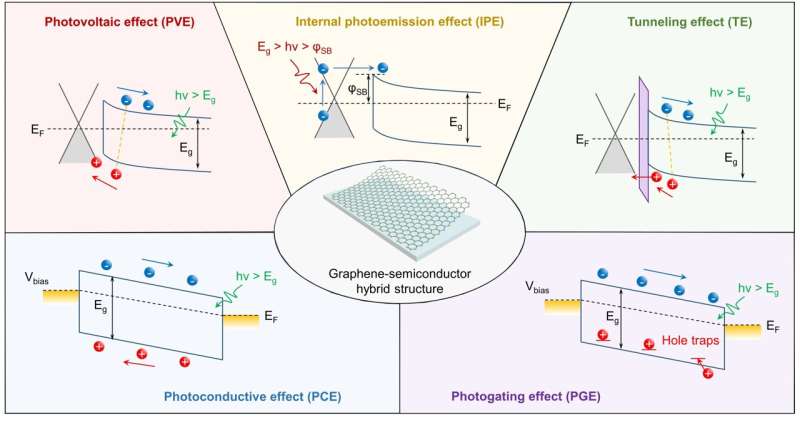This article has been reviewed according to Science X's editorial process and policies. Editors have highlighted the following attributes while ensuring the content's credibility:
fact-checked
proofread
A review of progress and outlook for photodetectors based on graphene–semiconductor hybrid structures

A recent review summarizes the progress made in graphene-semiconductor hybrid photodetectors over the past decade. It begins by introducing key photodetector performance indicators, providing the basis for an accurate performance evaluation. The review then elucidates the photoelectric conversion mechanism of graphene-semiconductor hybrid photodetectors.
Next, it delves into the operational principles of these detectors in various configurations, offering insights into typical devices. Finally, the review outlines future development directions for graphene-semiconductor hybrid photodetectors.
Graphene-semiconductor hybrid photodetectors offer several advantages:
- Graphene complements other semiconductor materials, leading to the emergence of new phenomena in photocurrent generation, transport, and collection, as well as the development of innovative devices.
- Graphene can be easily integrated with other semiconductors without the need for strict lattice matching, providing a high degree of flexibility in selecting semiconductor materials.
- The compatibility of graphene with silicon-based complementary metal-oxide-semiconductor processes, coupled with the mature process technology of traditional semiconductors, forms a strong foundation for the transition of graphene-semiconductor hybrid photodetectors from the laboratory to practical applications.
The paper is published in the journal Advanced Devices & Instrumentation.
The integration of graphene and semiconductors in constructing novel photodetectors has made significant strides in broadband detection, achieving GHz-level working bandwidth, ultra-high responsivity, and gain bandwidth production. However, the development of devices that combine high performance, multifunctionality, and wafer-level fabrication remains a challenge.
Overcoming these challenges requires the development of new methods and processes to optimize the performance and expand the functionality of graphene-semiconductor hybrid detectors, which is expected to drive advancements in photodetection technology.
More information: Jintao Fu et al, Photodetectors Based on Graphene–Semiconductor Hybrid Structures: Recent Progress and Future Outlook, Advanced Devices & Instrumentation (2023). DOI: 10.34133/adi.0031
Provided by Advanced Devices & Instrumentation





















